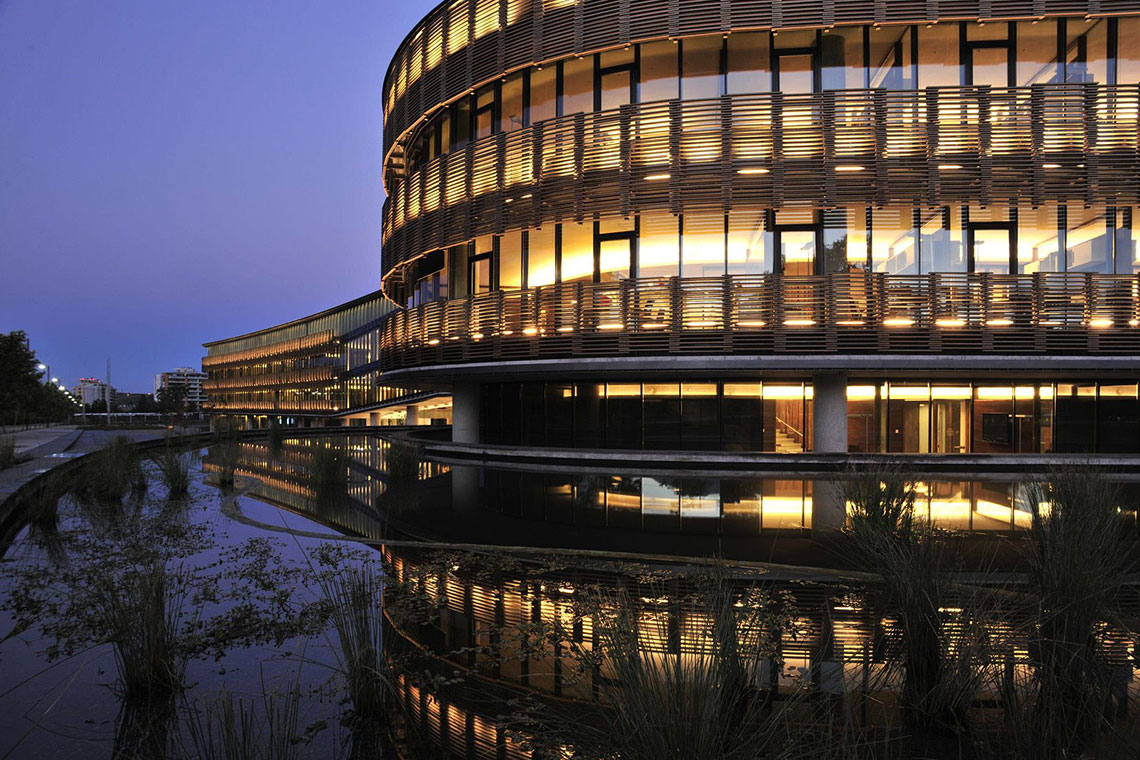The Transoceánica Building in Santiago de Chile stands as a testament to architectural innovation and sustainability, with steel playing a pivotal role in its construction and ecological footprint.
This sweeping structure, located in the heart of Chile’s capital city, embodies a harmonious blend of modern design and environmental thinking, setting a benchmark for sustainable architecture in the region.
Deployed for its strength, durability, and recyclability, steel lies at the core of the Transoceánica Building’s construction ethos. From its skeletal framework to its intricate façade, steel forms the backbone of this architectural marvel.
The elegant curves and grand atrium spaces that give the Transoceánica its striking aesthetic are made possible by the precision-manufactured structural steel skeleton that allowed the architects to combine the artistic and the sustainable in its design.

The Transoceánica Building's steel structure enables large spaces that allow for abundant natural light
A whole lifecycle approach
The Transoceánica Building’s commitment to sustainability leverages recycled steel to minimize its environmental impact. Incorporating recycled steel significantly reduces the demand for raw materials and curtails energy consumption during production.
By opting for recycled materials, the Transoceánica Building mitigates its carbon footprint, contributing to resource conservation and environmental preservation. Steel is uniquely placed to support this ethos as it is 100% recyclable with no loss of properties.
Steel’s recyclability also facilitates efficient end-of-life management, enabling the building’s components to be repurposed or recycled at the conclusion of the building’s lifecycle.
Beyond its recyclability, steel’s natural strength allows for the creation of spacious, column-free interiors that maximise natural light and reducing the need for artificial lighting.
Additionally, the Transoceánica’s versatile design enables the integration of renewable energy technologies into the building’s infrastructure. Solar panels, wind turbines, and other green energy systems are seamlessly incorporated into the structure and can even be expanded if required.
Geothermal energy plays a key role in the building’s heating and cooling systems, using water extraction from 75m-deep well. With a constant temperature of 12°C, this system is used to cool air and capillaries through steel-built heat exchangers.

The use of recycled steel throughout the design significantly lowers the building's environmental footprint
Through it various sustainable innovations, the Transoceánica Building boasts a Leadership in Energy and Environmental Design (LEED) certificate, showcasing its commitment to sustainability and environmental responsibility.
Achieving LEED certification signifies adherence to rigorous standards for energy efficiency, water conservation, and overall environmental performance, underlining the Transoceánica Building’s status as a green construction leader and setting a precedent for sustainable development in Souht America
Incorporating steel into the Transoceánica Building’s design and construction has not only resulted in a visually striking architectural landmark but also acts as a best practice example for sustainable building practices in urban environments.
As cities grapple with the challenges of climate change and urbanisation, structures like the Transoceánica Building serve as exemplars of how innovative design, advanced materials, and environmental stewardship can converge to create sustainable urban landscapes.
By harnessing steel’s strength, versatility, and recyclability, this iconic structure embodies a shift towards more environmentally responsible architectural practices, paving the way for a greener, more sustainable future in Santiago de Chile and beyond.
Images: +arquitectos